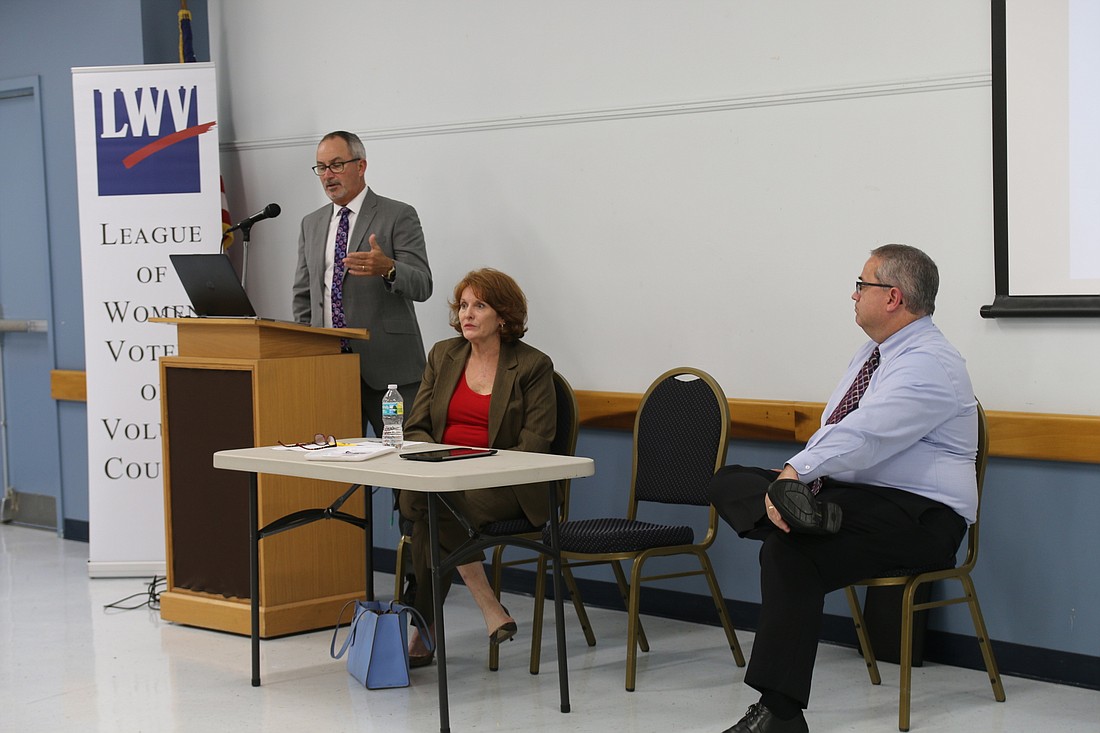- April 25, 2024
-
-
Loading

Loading

When it comes to growth, can government officials say no?
The consensus by panelists at the League of Women Voters of Volusia County's "What's Left in the Growth Management Tool Box?" event was yes, but there are some hoops to jump through, mainly created by Florida Legislature in the last decade or so.
The three-person panel was made up Volusia County Deputy County Attorney Jamie Seaman, County Director of Growth and Resource Management Clay Ervin and Ormond Beach Planning Director Steven Spraker. Each detailed a different component on managing growth.
Seaman said that previously, local governments were required to analyze growth and projects were overseen by the state as well. There were analysis of financial feasibilities, and a project couldn't be built unless the developer had the capital improvements to support the ensuing growth. For example, an apartment complex couldn't be built if there wasn't enough capacity on the street, and, a housing development couldn't be constructed without water and sewer capacities.
That all changed in 2009 when regulations were loosened by state legislators, and then in 2011 with the Florida Community Planning Act in which the Department of Community Affairs was abolished and the Department of Economic Opportunity was created, Seaman explained, changing the way developments were advertised in newspapers.
Developers were then allowed to "pay as you go" regarding capacity, meaning local governments couldn't say no to a development if the developer paid impact fees and other project costs.
Local government is now starting to feel the impact of the 2019 legislative session, Seaman added. Some of those include vesting all pre-existing development orders in comprehensive plans and putting a 120-day development application timeline in place for government. Impact fees also have to be used to mitigate direct impact of the development.
"Yes, we feel like our hands are tied, and I know you are frustrated as residents [on] why isn't the government doing more at the local level," Seaman said.
Spraker said that in the core of Ormond, the goal is to keep the existing densities. In the west portion of the city, the goal is reduce overall density.
"We're nearing build-out," Spraker said. "We don't have a lot of residential land that's left to be developed."
There are two residential projects currently being built: Pineland, which will be comprised of 192 lots, and Cypress Trails which will have 48. The 144-lot Marshside Village project was voted down by the city in 2018, and Spraker said that is currently in litigation.
The future growth of the city resides in Ormond Crossings. If he had to guess a total of maximum single-family units that could be added to the city, Spraker gave a ballpark estimate of 3,500 homes.